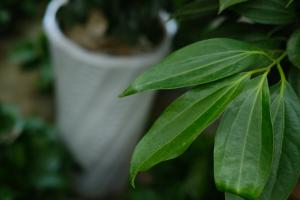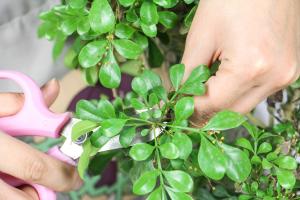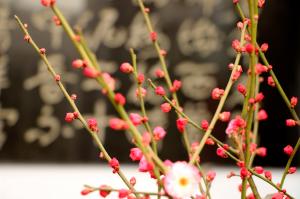Is My Plant a Rubber Tree or a Banana Plant?
If you're wondering whether the plant sitting in your living room is a rubber tree or a banana plant, there are several factors to consider. Both plants are popular choices for indoor gardening due to their beautiful foliage and ease of care, but they have distinct differences that can help you determine which one you have. In this article, we'll examine the characteristics of rubber trees and banana plants, as well as how to care for each one.
Rubber Trees
Rubber trees, also known as Ficus elastica, are a species of tropical plant native to Southeast Asia. They are known for their glossy, dark green leaves that can grow up to 12 inches long. The stems of rubber trees are also characteristic, with a reddish-brown color and distinctive aerial roots that grow down from the stem and anchor the tree in place.
To care for a rubber tree, it's important to keep it in bright, indirect sunlight and to water it regularly, allowing the soil to dry out between waterings. Rubber trees are also sensitive to drafts and changes in temperature, so they should be kept at a consistent room temperature. Pruning can promote bushier growth, and fertilizing every two weeks during the growing season can help keep the plant healthy.
Banana Plants
Banana plants, or Musa acuminata, are a species of tropical tree that produce edible fruit. While they are not typically grown for their fruit indoors, their large, dramatic leaves make them a popular choice for home gardens. Banana plant leaves can grow up to 9 feet long and 2 feet wide, with a characteristic deep green color and prominent veins.
To care for a banana plant, it should be kept in bright, indirect sunlight and watered regularly to keep the soil moist. While banana plants can tolerate slightly cooler temperatures than rubber trees, they should still be kept at a minimum of 60°F. Fertilizing every two weeks during the growing season can help promote healthy growth.
Differences between Rubber Trees and Banana Plants
While rubber trees and banana plants have some similarities, there are several key differences between the two. One of the most noticeable differences is the shape of the leaves - rubber tree leaves are typically longer and narrower, while banana plant leaves are wider and more oval-shaped. The stems of the two plants also look different, with rubber trees having reddish-brown stems and banana plants having thick, sturdy stems that are often used to support the weight of the large leaves. Finally, while both plants are used in home gardening, banana plants are more commonly grown for their fruit in commercial agriculture.
In Conclusion
Whether your plant is a rubber tree or a banana plant, both are great choices for indoor gardening. With proper care and attention, they can thrive in your home and add a touch of tropical elegance to any room. Simply keep in mind the differences between the two plants, and adjust your care accordingly. In the end, the most important thing is to enjoy the beauty and benefits that a houseplant can bring to your life.

 how many times do yo...
how many times do yo... how many planted tre...
how many planted tre... how many pine trees ...
how many pine trees ... how many pecan trees...
how many pecan trees... how many plants comp...
how many plants comp... how many plants can ...
how many plants can ... how many plants and ...
how many plants and ... how many pepper plan...
how many pepper plan...





























